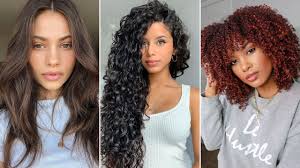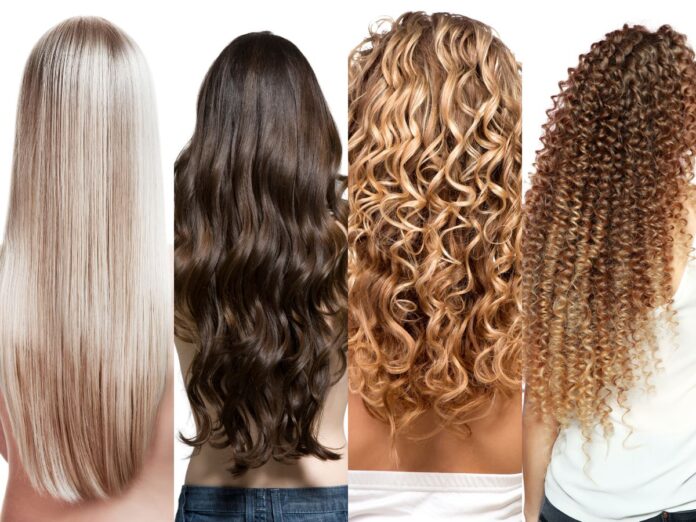When it comes to hair care, understanding your hair texture is key to finding the right products and styling techniques that work best for you. Discover the key to perfect hair care! Our guide helps you understand and embrace your unique hair texture, covering all hair types for a flawless routine. Hair texture refers to the thickness or diameter of individual strands as well as the overall pattern or shape of your hair. Whether you have straight, wavy, curly, or kinky hair, each type comes with its own set of characteristics and needs. Let’s delve into the intricacies of different hair textures to help you better understand and embrace your natural hair.
Contents
A Guide to Different Hair Types:
Straight Hair:
Hair types range from straight to curly, each with its own unique characteristics and care needs. Straight hair tends to be sleek and smooth, lacking significant bends or curls. It often reflects light easily, giving it a shiny appearance. However, straight hair can be prone to looking limp or oily, requiring regular washing to maintain freshness. To add volume and texture, consider using volumizing shampoos and lightweight styling products. Hair care with garlic shampoo offers numerous benefits, including nourishing the scalp and promoting healthy hair growth.

Wavy Hair:
Wavy hair falls somewhere between straight and curly, characterized by gentle bends and curves. It has more body and texture than straight hair but less definition than curly hair. Wavy hair can vary from loose, beachy waves to tighter, more defined patterns. To enhance waves, opt for products that provide moisture and definition without weighing down the hair.
Curly Hair:
Curly hair forms spirals or coils, ranging from loose curls to tight ringlets. It tends to be drier and more prone to frizz due to its natural shape, which can hinder the distribution of natural oils along the hair shaft. Curly hair benefits from hydration and moisture-rich products to maintain elasticity and minimize frizz. Curl creams, leave-in conditioners, and gentle cleansing methods are essential for curly hair care.
Kinky Hair:
Kinky hair, also known as coily or Afro-textured hair, has tight, densely packed curls or coils. It is characterized by its zig-zag pattern and can vary widely in terms of thickness and density. Kinky hair tends to be fragile and requires careful handling to prevent breakage and retain moisture. Deep conditioning treatments, natural oils, and protective styling are essential for maintaining the health and vitality of kinky hair.
Hair Care Tips:
No matter your hair type, proper care is essential for maintaining healthy and vibrant locks. Here are some general hair care tips to keep in mind:
Regular Washing
Regular washing is a fundamental aspect of hair care, regardless of your hair type. It helps to remove dirt, oil, and product buildup, keeping your scalp clean and your hair looking fresh. However, it’s important to strike a balance, as overwashing can strip the hair of its natural oils, leading to dryness and potential damage. Choose a shampoo specifically formulated for your hair type and wash your hair as often as needed to maintain cleanliness without over-drying. Additionally, incorporating a moisturizing conditioner into your routine helps to replenish lost moisture and keep your hair hydrated and manageable.
Conditioning
Conditioning is a vital step in any hair care routine, regardless of your hair texture. It involves using a conditioner to replenish moisture, nourish the hair, and improve manageability. Conditioners contain ingredients that help smooth the hair cuticle, reducing frizz and enhancing shine. For best results, apply conditioner after shampooing, focusing on the mid-lengths to ends of your hair, where moisture is most needed. Leave-in conditioners are particularly beneficial for providing ongoing hydration, especially for curly and kinky hair types. Regular conditioning helps maintain the health, strength, and elasticity of your hair, leaving it soft, smooth, and more resilient to damage.
Avoid Heat Damage
Avoiding heat damage is crucial for maintaining the health and integrity of your hair. Excessive heat from styling tools like flat irons and curling wands can lead to dryness, brittleness, and breakage, particularly for those with curly or kinky hair textures. To minimize heat damage, it’s essential to use heat-protectant products before styling, keep heat settings moderate, and limit the frequency of heat styling. Additionally, embracing heat-free styling methods such as air drying, braiding, or twisting can help preserve your hair’s natural moisture and prevent heat-related harm.

Trimming
Regular trims are vital for maintaining the overall health and appearance of your hair, regardless of its texture. Trimming helps prevent split ends, which can lead to breakage and dullness. By removing damaged or dry ends, you encourage healthy hair growth and maintain a polished look. Aim to trim your hair every 6-8 weeks, or as needed, to keep it looking its best. Consult with your cto determine the frequency and amount of trimming required based on your hair type and styling habits.
Protective Styling
Protective styling involves wearing hairstyles that shield the ends of your hair from damage and reduce the need for daily manipulation. These styles can range from braids, twists, and buns to more intricate updos and hair wraps. By minimizing exposure to harsh environmental factors and reducing friction, protective styles help retain moisture, prevent breakage, and promote hair growth. Additionally, they offer versatility and can be adapted to suit various hair textures and lengths. Incorporating protective styles into your hair care routine can contribute to healthier, stronger hair over time.
Conclusion
Understanding your hair texture is the first step towards achieving your hair goals. Hair types are classified into categories such as straight, wavy, curly, and coily. Embrace the unique characteristics of your hair and tailor your hair care routine accordingly. Experiment with different products and styling techniques to discover what works best for enhancing your natural beauty. Remember, no matter your hair type, confidence is the best accessory!



